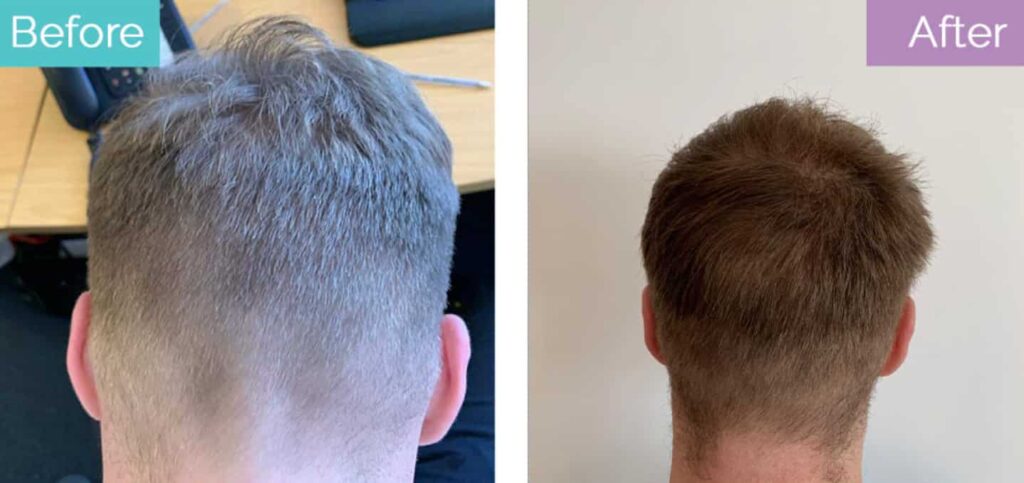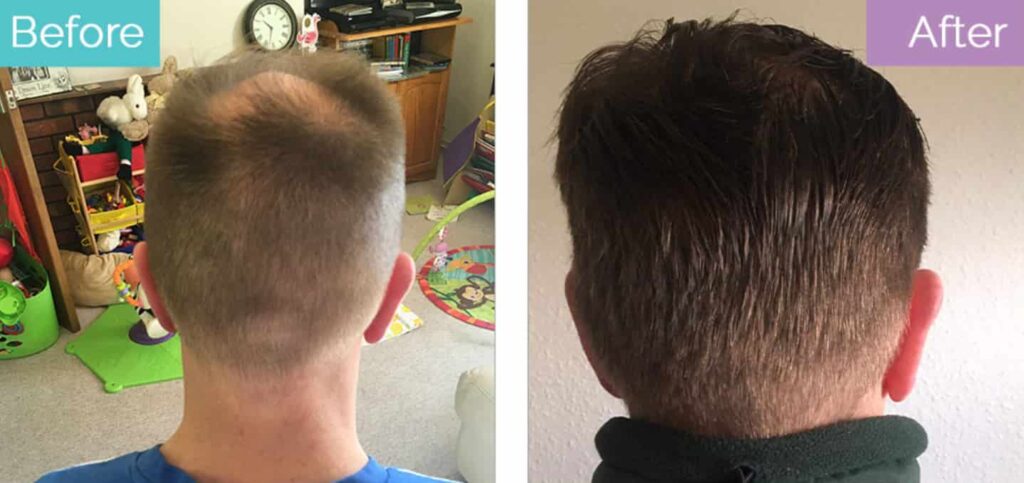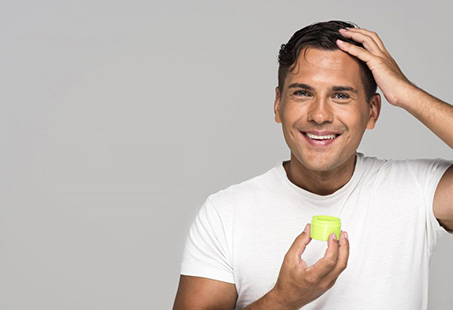With the hair transplant surgery done, the hard part is truly over. However, that shouldn’t undermine the significance of the aftercare process. After hair transplant surgery, normal recovery is crucial to achieving the desired results.
The health of the hair transplant donor area is important in that regard. Strip hair transplants result in a visible wound in the donor area. Many patients who receive FUE hair transplants end up with numerous tiny wounds on the backs of their heads.
It is common for patients to be concerned about the appearance of these scars in the donor area of the hair transplant, wondering if they will be able to recover normally.
Fortunately, the scarring will fade over time. However, the wounds will take some time to heal. Importantly, you need to remember that if you disregard the aftercare instructions for hair transplant surgery, then even if the procedure itself was successful, it will yield poor results.
Therefore, the things that you do or do not do after the surgery will make a difference to the final results. In this guide, we will make sure to tell you everything that you need to know to properly take care of the donor area.
How Does Donor Area After Hair Transplant Heal?
Whenever you cut your skin, the red blood cells of the body rush to that area. The response to the trauma is immediate so that the healing process can begin.
Red blood cells even help in the development of new body tissue in the damaged area of the skin.
Meanwhile, the white blood cells of the body ensure that the bacteria and other microbes that have entered the body are effectively fought against, and the wound is repaired. This process can take 3-5 days.

This is what happens when the surgeon cuts out the hair follicle units from the back and sides of the scalp.
Because these areas are DHT-resistant (hormone causing hair loss), the hair follicles are taken from here. However, this leaves the donor area for a hair transplant with numerous tiny wounds that have blood crusted on them.
These cuts will heal over time. Moreover, as the size of the wounds is quite small, they will not take more than a few weeks to heal completely.
Still, the recovery process is not as easy. There won’t be significant bleeding from the wounds considering that blood clots will develop, protecting the body from the entry of microorganisms. The clot will continue to dry, forming a scab while allowing the skin underneath to heal.
Eventually, you’ll notice that the scab has started to itch. It’ll get drier and fall off, revealing a taut, red skin underneath.
The edges of the skin have come together by then to close the wound. The prospect of scars never going away from the hair transplant donor area is scary.
However, they do go away. Still, those people who grow their hair long can successfully cover the scars. No one will ever see them.
Does Hair Grow Back In The Donor Area After A Hair Transplant?
Yes, your hair will start growing normally in the donor area after the hair surgery. The areas from which the follicles have been extracted will not grow hair, but the areas surrounding it will.
On seeing the final results of the surgery after a year, the donor and recipient areas will look the same.

The recovery process will be slightly troublesome as you’re going to deal with 2500-4000 little cuts on your skin. You are likely to feel sore and sensitive.
However, it’s normal. It is only temporary, after which you can start enjoying the results of the surgery. After the passage of 2 weeks, the scabs will be gone.
How To Heal The Donor Area After A Hair Transplant?
If you want a speedy recovery, make sure to follow these steps. Through them, you’ll come to find out how you can maintain a healthy donor area. It will also help with the results of the surgery. So, let’s get into it.
Clean the Donor Area
This is essential for avoiding infection and bad scarring in the area. Many people ask how to clean the donor area after hair transplant. For this, your surgeon will provide you with specific instructions. You will have to do the following, though:
- Use the shampoos provided to you by the clinic
- Gently dab it onto the whole scalp
- Wash it off with low-pressure water
- Pat it dry with a paper towel
In the aftercare process, you have to wash the surgical areas daily with the given products to keep the scalp sterile.
Otherwise, if your skin is dirty, the bacteria will flourish and reproduce easily, resulting in infection of the scalp. The size of the wound can grow.
This will slow down the recovery. Furthermore, it risks the formation of long-lasting scars in the donor area.
The worst part is that it can lead to the loss of tissue on the backside of your head, which can affect the growth of hair.
If you create a stuffy, closed-off environment for the scalp by wearing caps to hide your surgery, it can also lead to infections.
Sweat and dirt can accumulate. Therefore, do not cover your head. It needs an adequate supply of oxygen to heal.
Do Not Drink or Smoke
The blood-thinning property of alcohol makes it highly unsuitable for consumption in the recovery period. It can result in excessive bleeding and even make it harder for it to stop.
This will slow down the healing and increase the risk of infections and other post-op complications.
The contraction of blood vessels from smoking means that the blood flow to the donor area has decreased, which will negatively impact its healing. So, make sure to avoid these two.
Do Not Scratch or Pick the Scabs
A sign of healing is itching of the wound. But, admittedly, it is quite bothersome. The donor area will start to itch after some time.
However, you should, at no cost, scratch your scalp. Avoid the temptation to do so. You are advised to use nasal or ocean water sprays to soothe the itchy skin (consult with your surgeon about it). Moreover, you can apply ice packs to help your skin feel better.
Picking your scabs will do nothing but prolong the recovery period. The more you remove the protective covering over the healing tissue, the more time it will take for the skin to come together.
Each time you remove them, you’ll get back to square one in the healing process. This can also seriously damage your skin tissue there, leaving a dark-coloured scar after the healing is done. Try to be patient. Your body knows what it’s doing.
Take Your Prescribed Antibiotics
You can use an antibiotic cream as prescribed by the surgeon. Make sure to consult the doctor about its usage. You shouldn’t start using it on your own.
If you feel any burning sensation, or tenderness and see drainage (signs of donor area infection), you should contact us as soon as possible.
Your doctor will inform you about the medications that you’ll need during the recovery period.
Do Not Wear Tight Neck Shirts
Anything that abrasively rubs the scalp should be avoided. Round or high neck shirts can put pressure on your scalp and dislodge the grafts and scabs in the hair transplant donor area.
On the same note, do not rub your scalp with a towel after washing. Only gently pat it dry. Initially, you need to be careful about the small things so that the healing process isn’t slowed down.
Take Rest and Avoid the Sun
Going out for a stroll under the sun soon after the surgery is definitely not a good idea. It can damage the grafts and the donor area. You can even get a sunburn.
Try to stay indoors and take a rest by lying down on the bed, during the first few days at least. After that, you can start taking short walks to improve blood circulation.
How Long Will It Take for the Hair Transplant Donor Area to Heal?
The donor area will take almost 2 weeks to heal after the surgery. You will experience the following side effects during the process:
- Sensitivity
- Numbness
- Itching
- Redness
- Pain
This is all part of the healing phase, so just be patient. During that time, if you feel like your recovery isn’t proceeding normally or your symptoms are worsening, you should contact the clinic.
Is Shock Loss in Donor Area Possible?
It is normal to experience shock loss in the donor area. It can happen because of the anaesthesia; the longer the surgery, the more anaesthetic is going to be used, which can induce shock loss in the patient.
The extraction process can also shock the hair transplant donor area, as happens in the strip removal technique.
Your donor area hair should start growing back after three months. However, if you’re still left with bald spots after that, it may be because the surgeon has over-harvested donor area during the surgery.
That would leave you with permanent bald patches. Inexperienced surgeons leave the patients with a depleted donor area while trying to achieve a high density in the balding area.
Concluding Remarks
If you take care of some things such as cleanliness, lifestyle, medications, etc., hair transplant donor area recovery doesn’t have to be as difficult. The wound will heal normally in a few weeks if you follow your surgeon’s aftercare instructions. Still, if there’s anything that you need to know, we encourage you to mail your queries to [email protected].
Reviewed and Approved by Trichologist Yaprak Yazan


